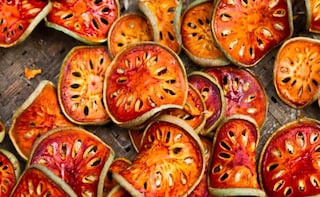Summer may not be the favourite of all seasons for most, but what I love about this time of the year is the refreshing range of fruits that it brings along – right from mango and lychee to kathal and kharbooja. The hot season also showcases an indigenous fruit, which is not as popular but those who are aware of its existence love it with whole heart – the bael.
Advertisement
Advertisement
Advertisement
Advertisement
For the latest food news, health tips and recipes, like us on Facebook or follow us on Twitter and YouTube.
Advertisement
Tags:
